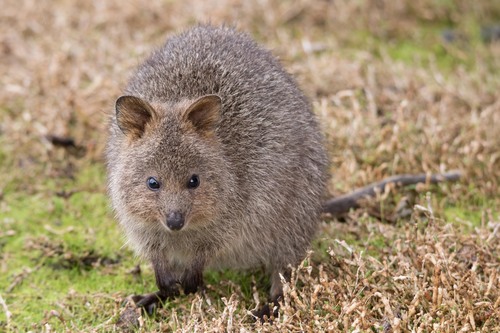
Quokka
The quokka, Setonix brachyurus, is a charming marsupial famous for its 'smile.' Found on Rottnest Island, these friendly, nocturnal herbivores thrive in groups. Their playful nature and role in seed dispersal make them a vital part of their ecosystem. Discover the quokka's unique charisma and ecological significance.
5-10 years
Lifespan
1.5 - 4.5 kg
Weight
Length: 40 - 54 cm
Size
Brown, Grey, Red
Color
10-12 months
Age of Sexual Maturity
8 months
Age of Weaning
20 mph
Top Speed
Vulnerable
Conservation Status
Decreasing
Population Trend
Characteristics
Setonix brachyurus, commonly known as the quokka, is a small marsupial native to Australia, particularly found on Rottnest Island and parts of the mainland. Quokkas are noted for their friendly demeanor, often described as having a 'smile.' They are herbivorous, nocturnal, and have a short, muscular tail. These social animals live in groups and play a crucial role in seed dispersal within their ecosystem.
Distribution Range of the Quokka
Setonix brachyurus, commonly known as the quokka, is native to the southwestern region of Australia. It is primarily found on a few small islands off the coast of Western Australia, including Rottnest Island and Bald Island. Additionally, there are some populations in mainland Western Australia, particularly in the forests and coastal scrublands of the southwest.
Quokka's Habitat
Environmental Conditions
Quokkas inhabit a variety of environments, but they are most commonly found in areas with dense vegetation that provides cover and access to water sources. On Rottnest Island, they are often found in shrublands and heathlands with sandy soils. The climate of these regions is Mediterranean, characterized by wet winters and dry, hot summers.
Ecological Niche
Quokkas are herbivorous marsupials that primarily feed on grasses, leaves, and stems. They are well-adapted to survive in areas with seasonal water availability and rely on their ability to extract moisture from their food. Their role in the ecosystem includes seed dispersal, which helps maintain the health and diversity of their native habitats.
Copyright @ Nature Style Limited. All Rights Reserved.
 English
English